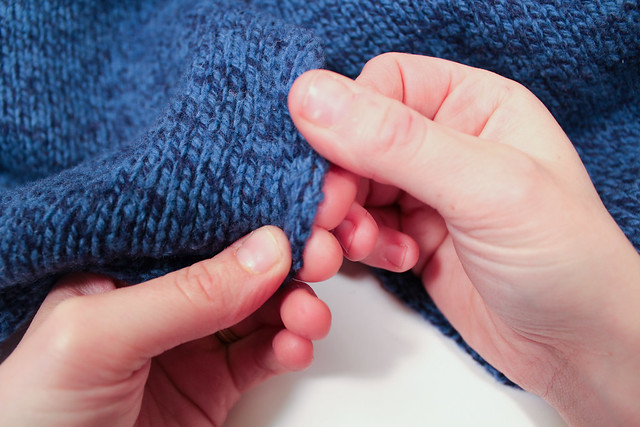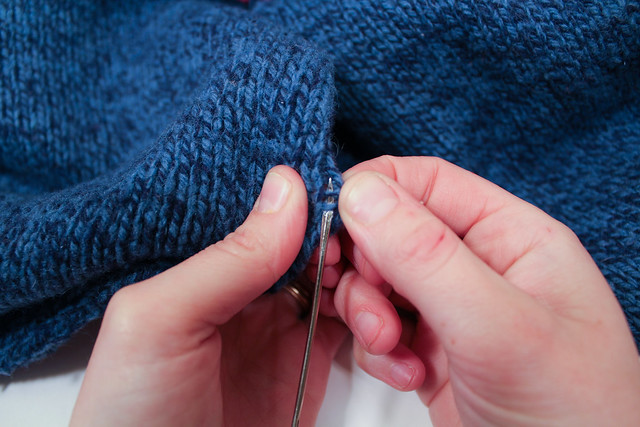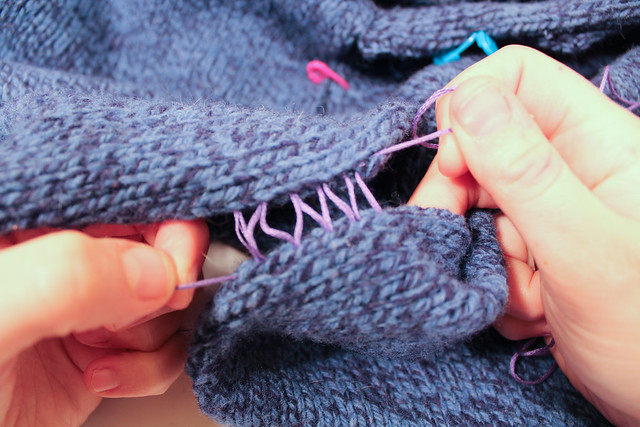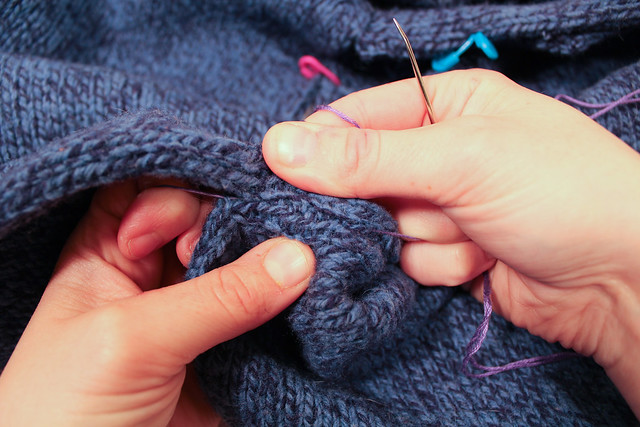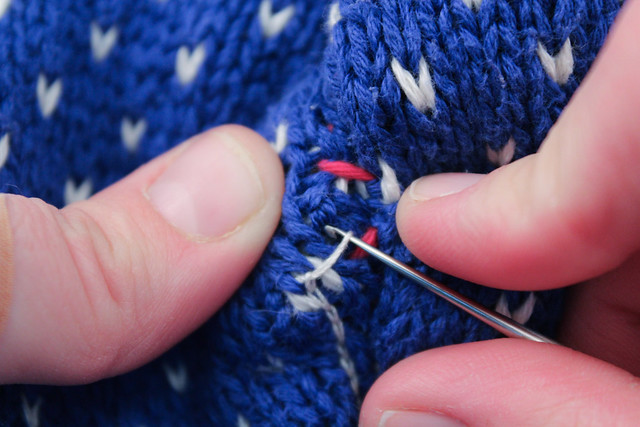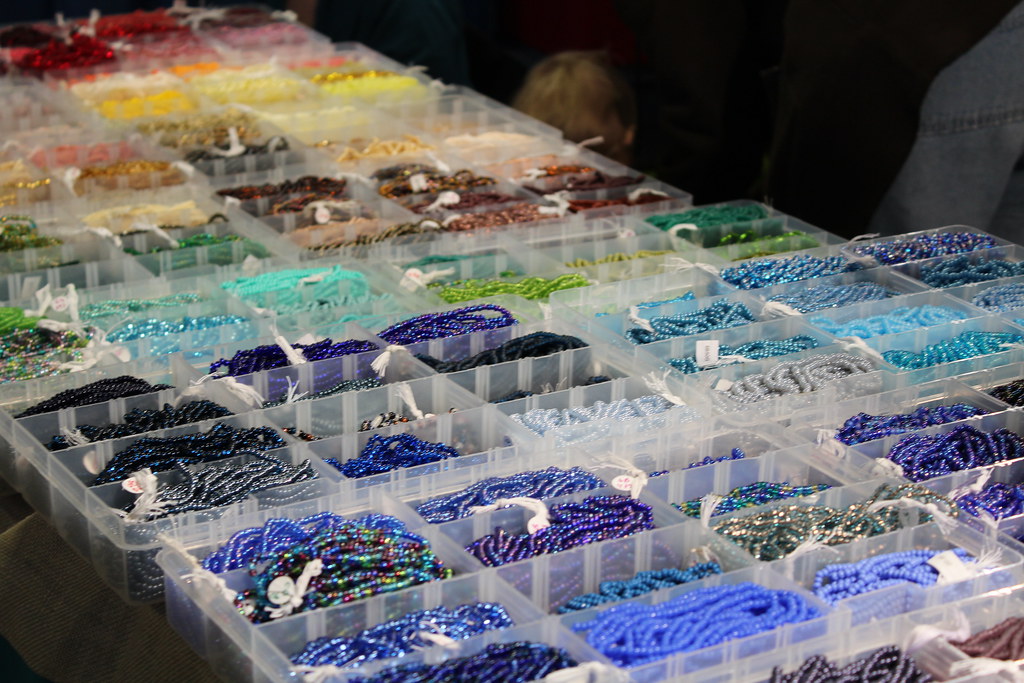 |
| I iz guardin the presents. |
Feline Friday – It’s beginning to feel like Christmas
Photo Tutorial: Mattress Stitch
When I’m seaming a sweater, one of the most used stitches I use is the Mattress stitch. Also known as the Ladder Stitch, I love this stitch because when done right, it’s nearly invisible, adds very little bulk to the seams, is quick to do, easy to take out, and practically perfect. Let me tell you how I do the mattress stitch.
2 quick notes: here I start in the middle of a project. Normally I start at the beginning of the seam and work my way up, but that’s hard to photograph well. Also, I’m using embroidery floss in the tutorial, both because it’s in a contrast color, and because it’s cotton, and easy to pull out. Most people like seaming with the yarn they used in the project, but if it’s too delicate, or too bulky, embroidery floss in a similar color works beautifully. Mattress stitch done right should be practically invisible.
The first part of learning the mattress stitch involves taking a good look at your knitting. Look between two stitches. See the horizontal bars that run between the stitches? This is where the sewing action will take place. You’ll want to be working the mattress stitch between the 1st and 2nd columns of stitches on the edge of your work. See Below?
Don’t quite see it? Let me show you with my sewing needle. I’ve put 2 of the horizontal bars on my sewing needle.
Okay, so that’s what the bars look like on the knit side. What about the purl side?
The bars that run between the stitches on the knit side are the purl bumps on the wrong side. If you are having trouble ID’ing the purl bumps, turn your knitting over with your needle placed where you think the stitch should go. The needle should be running between the 2 columns of stitches we found before. See?
Right, so we now know where the stitches are supposed to go. When I teach the matress stitch, I always say to go beneath 2 horizontal bars each time. Some directions will tell you to go underneath only one bar, but when you’re first learning, it’s easier to go underneath 2. I normally go underneath 2 bars if the yarn is an aran weight yarn or lighter, just because mattress stitch goes a lot more slowly when only going underneath 1 bar. For aran weight yarns and higher (like bulky) I’ll go underneath only one bar, because each “stitch” is so big. So in most instances, just go underneath 2 bars between the stitches. I like to start with the right side, just because I’m right handed.
Now pull the needle through, leaving enough thread at the end for a couple of inches of tail. Don’t pull the yarn through! See how the thread goes underneath 2 bars?
Now I go to the left side, and put my needle underneath 2 bars.
Pull through again. Congrats, we’ve gotten started! Now we’re back to the right side. How do you know where to put your needle next?
Look at the thread that’s coming out from the right side. Put your needle down through the hole that thread is coming out of, and run it up under 2 more bars.
Pull the needle through.
Now we go back to the left side, find the thread coming out of the left side, and put our needle through the same way we did for the right.
And pull the needle through again.
Now, we repeat the pattern, going under 2 bars on the right side, then two bars of the left side. The stitch starts to look like rungs on a ladder, hence the alternative name “ladder stitch.” Notice this whole time I’m not pulling the stitches tight, I’m leaving them loose.
When I’ve got about 1″ to 2″ of stitching, I stop and admire my work, and make sure everything looks right. Then, I take the tail, and the thread that’s attached to the needle?
I pull both ends tight. Note that I’m not letting the fabric wrinkle or scrunch. I’m just pulling on the thread.
There’s a quick trick to find out if you’ve pulled the thread tight enough. If you can pull the 2 pieces of fabric apart and you can see your stitches, it is still a little loose. Pull both ends again.
Now those stitches are tight. See how I’m holding the thread with both ends? At this point, neither end is secured, so if I pulled on the fabric without holding the ends tight, the stitches would again loosen up. This will mitigate when you work more of the seam.
Now, I loosen up the last stitch I did, so I can find where I need to go next, and I continue.
Now, what happens if you are working columns of stitches to rows of stitches? You still use the mattress seam, the placement on the row side is just a little different. Take a look at the edge of your knitting, where you bound off or cast on. See how the v’s connect to make a zig-zag? This is where we’ll be working. Let’s look at an individual stitch. Here, I’ve got it lifted up by my needle.
You are going to go down through the middle of that stitch, between the 2 sides of the “V.” Then, you’ll come up from under the fabric through the next “V.” See how you still have 2 strands on the sewing needle?
Pull the yarn through, leaving the same type of tail you left when working the mattress stitch before. Now, on the column side, work the mattress stitch as normal.
Now, go back down to the row stitch side. See how the thread is coming out, same as it did with the other matress stitch? You’re going to go down through the stitch with the thread, and go up through the next stitch.
And repeat over and over again, until you run out of fabric to stitch on.
It’s important to note, you can switch between working columns to columns, columns to rows, rows to rows, and back again. You can be seaming on the stockinette side, and then switch to seaming on the row side.
Got questions? Please ask in the comments, on twitter, or on facebook. Or, if you liked the tutorial, tweet it, facebook it, or share it!
Crochet Reinforcing for Steeking
Have you ever tried to steek?
When I was first learning to steek, I felt I couldn’t cut into my own knitting. So I went to the thrift store and got a slightly-felted really ugly sweater and went to town. I practiced sewn-reinforcement steeking, hand-sewn reinforcement steeking, crochet reinforcement steeking, and a variety of other ways. By the time I was done, not only was I really good at cutting between stitches, but I’d gotten comfortable enough cutting knitting without even reinforcing – just going for it!
When people ask me what my favorite type of steeking is, I normally say crochet. This is not because I think it is the best way to steek (sometimes some crochet reinforcements can be a bit tight), but mostly because I’m lazy. I nearly always have a crochet hook and thin yarn/thread on hand. A sewing needle I sometimes have to go searching for.
There’s two ways of working a crochet reinforcement to steek. The first is to work a row of single crochet around the column of stitches to either side of where you are going to cut. While easy to do, it is sometimes hard to make sure you catch all the “floats” on the back of the work when you do this method.
The second way is my preferred way of working a crochet steek, though it is sometimes a bit of an inflexible reinforcement. This involves working a row of slip stitches on either side of the planned cut. Below is the process of how I normally proceed.
But before I speak to that, a note about yarn. Below, I have a sweater that I’m cutting. The yarn is made of cotton, which has very little ability to “grip” itself to prevent it from unraveling, which I why I felt it necessary to add reinforcing. Still, if I wanted to go with a reinforcement that was more stable than crochet, I would have hand sewn. I made the decision to use a crochet reinforcement because the sweater had been washed multiple times, and the yarn was essentially “blocked” into place. When I removed the seams, there was very little fraying unless I actively tugged at the stitches. It’s always best practice to block your piece before steeking.
First, take a look at your knitting. Look at a column of stitches. They often look like a bunch of V’s stacked on top of each other. If you pull the “V” apart, you’ll notice between each V is a bar running along the back. Each time you work a slip stitch, you want to be sure you are catching the bar, and any floats that are behind the bar.
 |
| My crochet hook here is pointing to the bar I’m going to go around. |
You want to join your yarn so that your hook and 1st loop is on the front of your work, and the yarn is on the undersides, as shown below.
Feline Friday – The Holiday Season Starts!
A helpful tool to Set in Sleeves
I’ve talked before about my love of locking stitch markers. Today’s tip comes to you courtesy of my rainbow stitch markers, which still fill me with much glee.
When I’m setting in a sleeve, I use locking stitch markers to act as guidelines. This way, if I have to do some “easing” I know that I’m not going to come to the end of the seam and have extra fabric on one side.
What I do is this:
First, I mark the middle of each sleeve with a locking stitch marker.
Then, I pin the ends of the sleeve (where it meets at the armpit on both sides) with a different color. I pin the two middle markers together also.
Then, distributing the stitch markers evenly, I pin every few inches the two sides together.
The best part? Unlike pinning with pins, locking stitch markers don’t poke me. This makes me happy, and a little less likely to bleed on my knitting.
The Low-Down of Plies: What to know when choosing yarn | Jordana Paige Blog
 |
| pretty, pretty yarn! |
I’m over at Jordana’s today with a continuation of my last blog post. This one is titled: The Low-Down of Plies: What to know when choosing yarn
Grandpa Les, and The Joy Of Making Something Yourself
 |
| My grandparents’ house, still well taken care of. |
The evening before NEFF, my mother picked me up at the train station in Springfield. “I want to show you the house where I grew up,” she said, “The one your grandfather built.”
My mother had grown up in Springfield before moving, when she was in high school, to Deerfield. My grandmother still lives in this house, but the last time I’d seen the house my Grandfather, Grandpa Les, had built I’d been much younger. Since it was only a little bit out of our way, we swung by.
My grandfather, and his side of the family, has always been handy with tools. For my grandfather that meant he loved to tinker – one of his hobbies was fixing clocks. He had a fully tricked-out woodshop in the back of his yard that he fashioned himself. For his sisters, one is a beautiful seamstress (though her eyesight is going now), and the other was handy with anything to do with yarn: knitting, crochet, tatting, rug making, etc. Their mother, my great grandmother, used to dye her own wool to make rugs in intricate detail. Going to my Grandfather’s childhood home (my great aunt, the seamstress, lives there still), the attic is a treasure trove of crafting supplies that are a joy to behold.
 |
| My grandfather built this rock wall for my Grandmother’s Garden. It’s still standing. |
When my grandfather wanted to learn a new skill, he got a book. Or more accurately, books. When you go to his library in my grandmother’s house, you find books on electricity and wiring (he eventually got his electrician’s licence), plumbing, and carpentry. My grandfather was an early adopter of the computer, and there’s books on coding and how the internet works (the internet ones make for funny reading, nearly 15 years later).
He loved to take things apart to see how they work. I see that same quality in myself – I love to learn a new knitting technique, and then fiddle with it until it breaks down. When I see a knitted sweater or a stitch pattern that I’ve never seen, I will shamelessly look at the inside seams or inspect the use of knits, purls, yarnovers and decreases.
Grandpa Les wouldn’t buy something if he could make it himself – and he could make nearly anything. Need a rabbit hutch? He’s got you covered. His grandaughter wants a play kitchen? Give him two weeks. I think he really understood the satisfaction of doing something yourself, to take the time to do it right.
I find that same joy in knitting and crochet. And even though our crafts use different materials, every once and a while, while I’m meditatively working, I’ll think of him. It makes me happy.
New England Fiber Festival Recap
This is going to be picture-heavy, but it’s worth it!
I spent this last weekend in Springfield, MA. I was teaching at the Fiber Festival of New England
 |
| My grandmother and I, early in the morning before I head to NEFF. |
(sometimes called New England Fiber Festival, or NEFF). I grew up in Massachusetts. My family lived outside of Boston when I was little, and we often visited family in other parts of the state. Even when we moved to other states, I returned back to MA for summer camp at Chimney Corners YMCA Camp each summer. Going to NEFF, in some ways, was a little bit like coming home… especially because I crashed with my grandmother, who lives nearby. It meant that both my mother and grandmother could send me off on Saturday morning.
NEFF is an incredibly well-run event, and I can say that both as a teacher and the support I received, and as a participant, when I returned on Sunday to browse and network.
 |
| I got to NEFF early, so I could check out my classroom. Aren’t they nice? |
One of the highlights of the trip was my second class, Hairpin Lace Scarf. Our group had a bit of some adverse conditions – there was a fashion show and another class with a miked instructor just adjacent, but everyone kept a great attitude.
I had two great experiences happen during the class. The first was when an old family camp friend walked in (Sue B!) and informed me she was one of my students. I was so happy and excited to see her – I had not been expecting her to be there! It took me a moment to recover myself I was so startled, but in a wonderful, wonderful way.
Then, nearly an hour into my class, as we’re making great progress I look up, and in the doorway is my Aunt Sue! She had stopped in with her sisters to say hello. It’s thanks to my Aunt Sue that I have the only picture of myself teaching from the weekend.
 |
| Shot from my Aunt’s Camera-phone, I’m talking about Hairpin Crochet. |
Having both camp friends and family stop by was SO incredible. Living in Washington, DC, I have a wonderful network of people that support me in my endeavors. Being able to have an opportunity to teach at a venue located so near my family and camp friends meant that my childhood support network could roll out the carpet to support me.
On Sunday I returned to the event with my mother and my best friend (again, from Camp, I’ve known her since we were both 8 years old!), Becca. Both my mother and Becca coped well as I dragged them from one booth to the next telling them about what I loved. It’s such a rare opportunity to share with people I love the things I love.
I’ll close out with some pictures of the event, with captions.
 |
| Melissa Jean‘s fabulous buttons, each one signed on the back and absolutely lovely. |
 |
| A fabulous stall by Decadent Fibers. Pattern Is #15 Multidirectional Cap Sleeve Top by Irina Poludenko |
 |
| Also by Decadent Fibers, these cute pumpkins! |
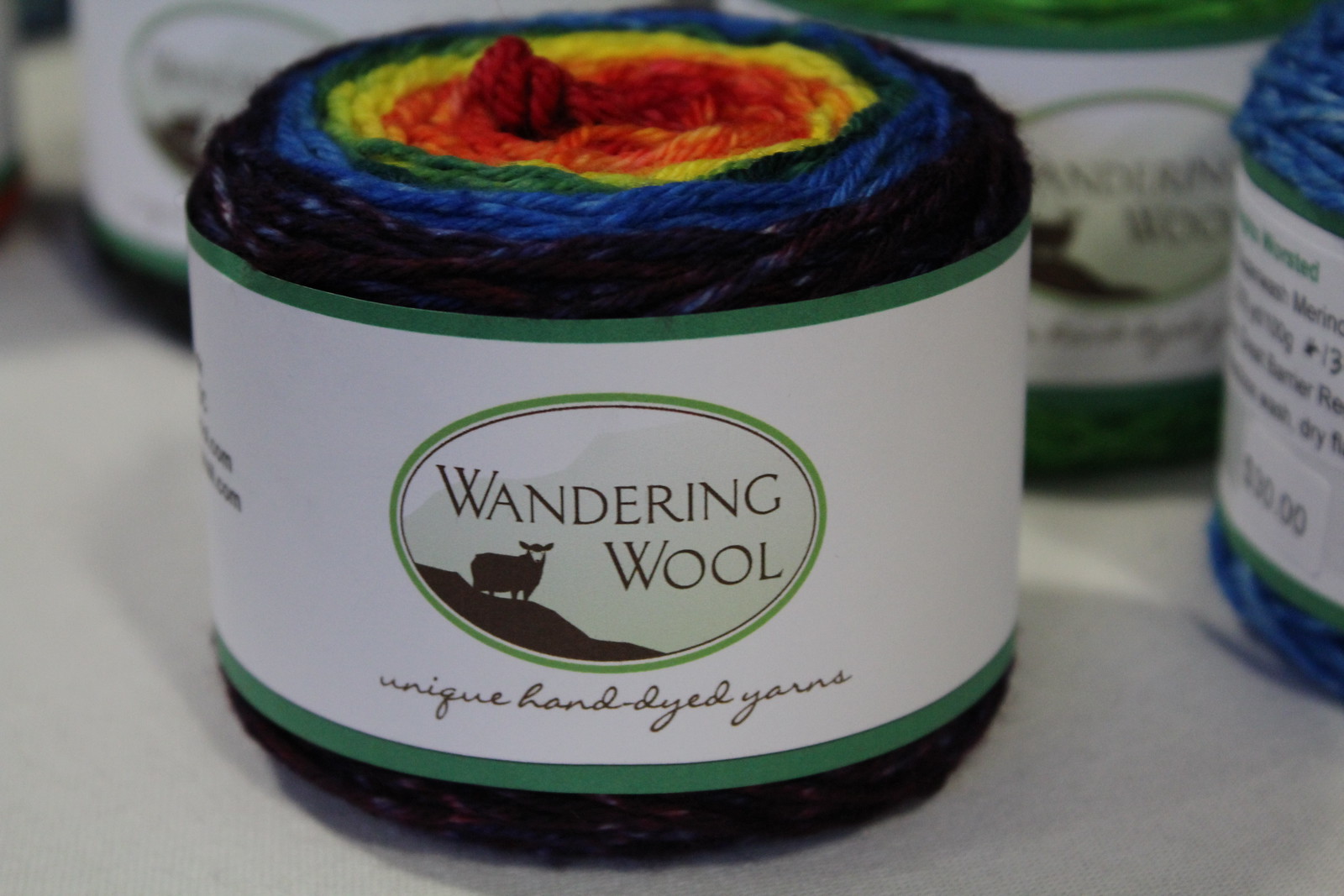 |
| Pretty Gradient Skeins by Wandering Wool. I kept admiring her stall and samples – turns out she’s from DC, pretty close to me! |
 |
| A few different samples in Wandering Wool‘s Stall. |
 |
| This (girl) alpaca looked like she was rocking the mustache for November. |
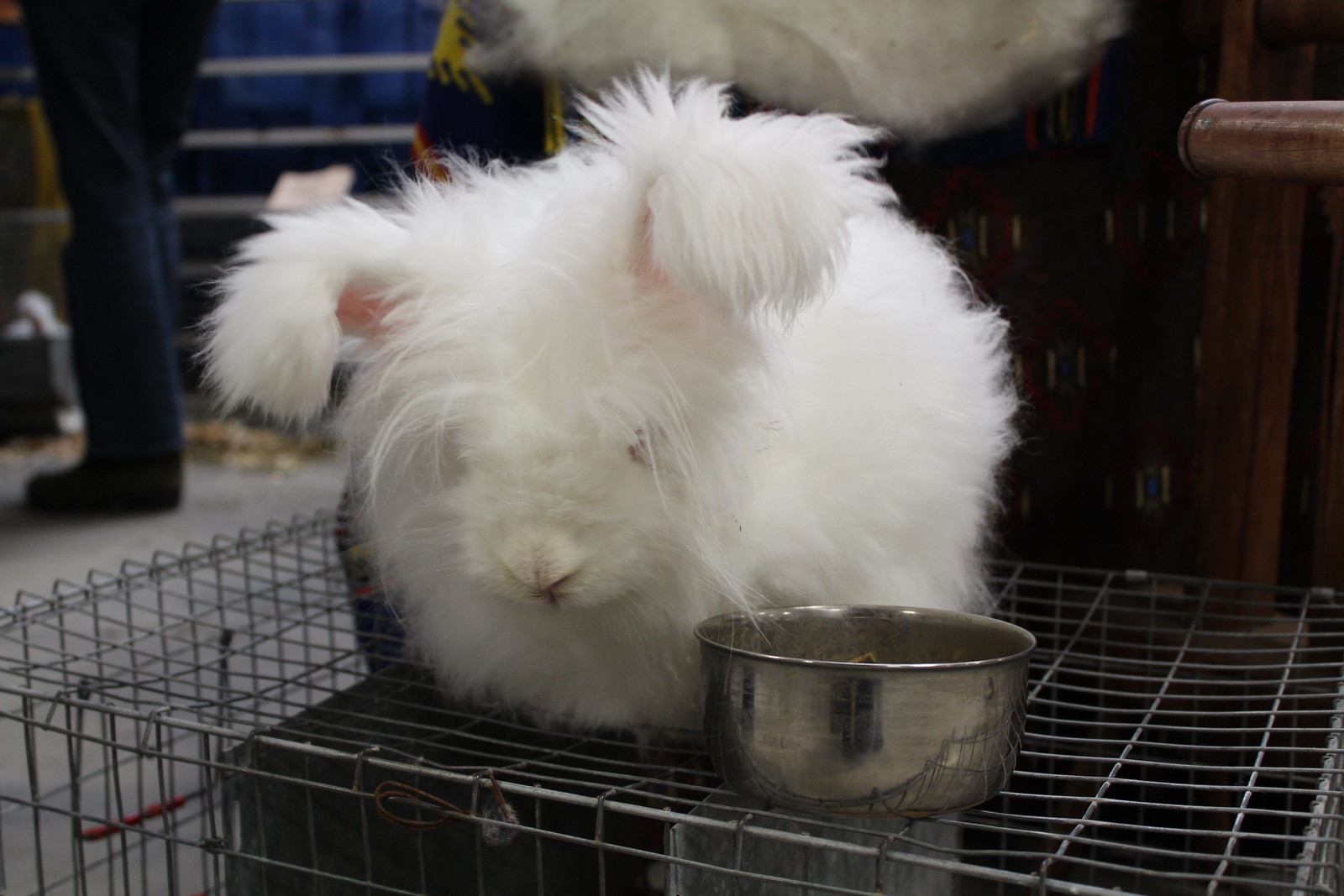 |
| German Angora Rabbit. Nearly took it home. |
Images from FFNE
- « Previous Page
- 1
- …
- 23
- 24
- 25
- 26
- 27
- …
- 52
- Next Page »


